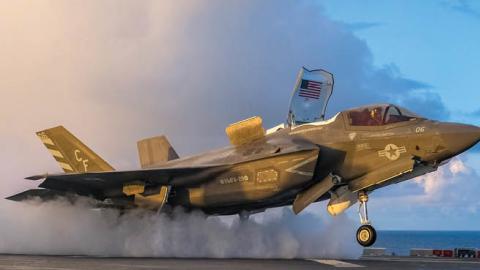China’s increasing challenges to the existing Indo-Pacific order have compelled the region’s democracies to undergo strategic changes through the policies of individual governments, bilateral alliance-based cooperation, and multilateral efforts. This study examines the Indo-Pacific region’s shifting policies as defined by the key policy documents of Japan, Australia, New Zealand, and the United States.
While the perspectives on regional order held by Indo-Pacific democracies vary from country to country, collectively they reflect a commitment to the rule of law, democracy, freedom, human rights, and a market economy. This study focuses on three lines of effort: diplomacy and defense, infrastructure and development, and economics and trade.
The Quad partnership presents an opportunity to demonstrate US leadership and a commitment to the values and principles shared by Indo-Pacific democracies. In the immediate term, the success of the Quad will require building an effective regional response to the COVID-19 pandemic, and in the long-term, committed engagement to the region’s critical needs – connectivity, both high-quality physical and digital infrastructure; climate change, and supply chain resilience.
Introduction:
The initial focus of this research project was the Trump administration’s Indo-Pacific Vision as set out by the president in remarks made in November 2017, in Danang, Vietnam. It soon became apparent, however, that focusing solely on the president’s vision and on US policies toward the region would be to overlook the efforts of US allies and partners in the Indo-Pacific to respond to and shape strategic change and sustain the existing, rules-based order across the region. Collectively, their endeavors represent a policy mosaic of efforts designed to support a balance of influence based on a balance of power.
In August 1997, Australia’s Prime Minister John Howard released “In the National Interest,” the first white paper of his government, which, looking toward the 21st century, assessed that Asia’s “rapid economic growth [was] changing strategic realities among regional countries” and in that context, “China’s economic growth, with attendant confidence and enhanced influence, [would] be the most important strategic development of the next fifteen years.” Twenty years later, in its 2017 Foreign Policy White Paper, the Australian government judged, “Today, the Indo-Pacific is undergoing a strategic transition as profound as the economic transition that preceded it.”
The following study is focused on efforts by governments of the region, primarily the United States, Japan, and Australia to understand strategic change—to respond to the multi-faceted challenges posed by and inextricably tied to the rise of China, to shape and structure the evolving Indo-Pacific order, and, in the process, to define and maintain a rules-based order across the region and beyond.
The study begins with early efforts on the part of the United States to integrate a rising China into the existing international order. Remarks by Robert Zoellick entitled “Whither China: From Membership to Responsibility?” reflect this early vision of order. The study then transitions to a consideration of various “visions of order” set out in the Asia-Pacific region to shape the 21st century order.
Under the leadership of Prime Minister Shinzo Abe, Japan has played a major role in attempting to structure a rules-based order that reflects western values, democracy, the rule of law, and market economics. Key Japanese milestones in this regard have been Foreign Minister Taro Aso’s address, “The Arc of Freedom and Prosperity,” and Prime Minister Abe’s remarks, “The Confluence of Two Seas.”
India and ASEAN have also developed similar “Visions of Order” whose common aim is to maintain the centrality of ASEAN in the region’s security architecture. Their respective visions have been marked by concepts of “inclusion” as well as respect for a rules-based order. In a region increasingly concerned with being forced to choose between prosperity and security, their efforts have been aimed at obviating the need for strategic choice.
China, too, has developed its own vision of order that is reflected in the evolution of China’s Belt and Road Strategy, which has energized China’s economic engagement with the Indo-Pacific region. At the same, President Xi advanced a new multilateral Asian Security Concept that takes aim at the United States’ bilateral alliance structure in the region. Xi has also worked to position China to play a leading role in reforming the existing international order. Xi’s apotheosis came at the World Economic Forum in January 2017.
Since the end of the Cold War, the United States’ vision of order has been alliance based. Beginning with the East Asia Strategy Initiatives of the early 1990s, successive administrations, Republican and Democratic alike, have committed the US to sustaining and enhancing an alliance-based security system that, under US leadership, has underpinned regional stability and served as the foundation of economic prosperity. For the United States, the alliance system has afforded Washington a leading voice in discussions on key Asian issues. The current study tracks United States strategy toward Asia from the end of the Cold War to the Rebalance of the Obama administration and President Trump’s Indo-Pacific vision.
Further, the study explores the Indo-Pacific region’s understanding of strategic change as defined in key foreign and defense policy documents of Japan, Australia, New Zealand, and the United States. Within the same context, also explored are the challenges posed by China to the existing rules-based regional and international order and, in response, the efforts by these governments to push back against Chinese actions in order to protect and advance their respective individual and shared interests. This push back has involved the policies of individual governments, bilateral alliance-based cooperation, and multilateral efforts to deal with the diplomatic, security, and economic challenges posed by China.
The policies adopted by the United States, Japan, and Australia reflect their respective national interests, which, while not identical, are overwhelmingly congruent and mutually reinforcing with respect to maintaining a rules-based order that sustains western values and supports a balance of influence based on a balance of power. This study focuses on three lines of effort: diplomacy and defense, infrastructure and development, and economics and trade. The cases studied are not intended to be exhaustive but, rather, illustrative of actions taken in Washington, Tokyo, and Canberra to support a shared vision of a Free and Open Indo-Pacific. The study concludes with a number of policy recommendations for the United States and the Biden administration.



















